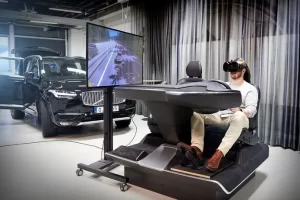The Influence of Gaming Technology on Car Development

XR gaming technologies democratize access to immersive experiences, enabling gamers to play while on the move. Gamification elements also add depth and variety to car simulations by capitalizing on competitive components – drawing in larger audiences while expanding long-term appeal.
Automakers and video game companies share an intricate relationship, providing young car enthusiasts with their first taste of luxurious vehicles that may never leave the screen. But more is at play here.
Video games have changed the way a whole generation interacts with cars.
Video games have created a vibrant community of car enthusiasts and kept them involved with the industry. Many racing games feature models of real cars, heightening awareness of brands and encouraging gamers to purchase or lease vehicles.
Gaming technology is also revolutionizing in-car experiences. Virtual Reality (VR) and Augmented Reality (AR) provide unprecedented access to immersive virtual worlds, allowing users to step inside virtual cockpits and explore virtual vehicles in greater detail than ever before. User-friendly interfaces derived from gaming design principles make these experiences more accessible to a broader audience while increasing long-term appeal.
These technologies also facilitate new forms of in-car entertainment such as haptic gaming. At CES this year, Holoride showcased an interactive VR game where virtual motion was synced up with real world movement of their vehicle – an innovative technique which could open up an entirely new market for immersive and interactive game developers as well as allow back seat passengers to play while the vehicle is moving!
Video games have influenced the design of cars.
Video games have become an integral part of gamers’ lives, impacting how they view cars. Gaming technology has also enabled more immersive virtual environments to provide realistic car experiences to gamers – as well as advanced physics and dynamics engines which give the impression that players feel connected with the performance of each car they control.
Video game development teams have also upped the realism ante by using ray tracing technology. This enables players to experience lighting conditions and reflections more accurately than ever, leading the way to augmented and virtual reality simulations that provide even greater car simulation accessibility.
Auto manufacturers have also recognized the power of gaming technology, using it to promote vehicles and create interactive marketing experiences. Some have even partnered with game developers to feature their vehicles in popular racing games; this has had an enormous impact on brand loyalty and real-world sales as gamers who ‘test driven’ the car in game often purchase the real thing later.
Video games have influenced the technology in cars.
Game engines aren’t only used to power computer games; they’re also helping designers craft automobiles. Ray-tracing technology, commonly employed in gaming software, is now being applied to car design using tools such as Porsche’s Lucid car configurator.
Gaming fans have also demanded their cars feature user-friendly interfaces and controls similar to what are found in videogames, leading to innovations like touchscreen infotainment systems and voice command technology.
As cars evolve into mobile home theater rooms, with windows and windshields acting as screens and haptic activation in seats, video game developers may see an opportunity to expand their audience reach while expanding VR/fully immersive game markets. Holoride demonstrated at CES 2018 an application which syncs up with real world motion to deliver entertainment through virtual reality technology.
Video games have influenced the marketing of cars.
Video games provide automakers with an avenue for reaching a demographic they wouldn’t otherwise reach with traditional advertising techniques. By teaming up with video game developers, car companies can show their latest models to young viewers who wouldn’t otherwise see them advertised widely in mainstream media outlets.
Automotive and gaming industries have enjoyed a robust relationship for decades. As VR and AR evolve, gamers will become immersed in virtual driving environments; advanced haptic feedback systems will add another level of realism that adds depth to simulation experiences.
Racing video games no longer center around speed alone; instead many developers are shifting focus towards sustainability and efficiency. Nissan recently released an app called Carwings that allows Leaf EV drivers to compete against one another on driving efficiency instead of speed. They can see how far their charge went on one charge as well as energy consumption of accessories and other important metrics.
